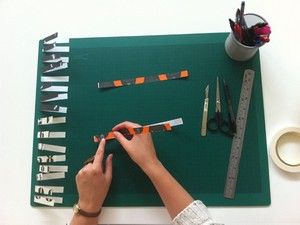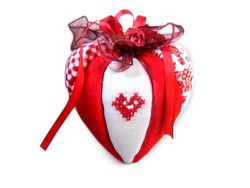Patchwork or "pieced work" is a form of needlework that involves sewing together pieces of fabric into a larger design. The larger design is usually based on repeating patterns built up with different fabric shapes (which can be different colors). These shapes are carefully measured and cut, basic geometric shapes making them easy to piece together.
Evidence of patchwork—piecing small pieces of fabric together to create a larger piece and quilting layers of textile fabrics together—has been found throughout history. The earliest examples have been located in Egyptian tombs and also in early age of China about 5000 years ago.

Patchwork is most often used to make quilts, but it can also be used to make bags, wall-hangings, warm jackets, cushion covers, skirts, waistcoats and other items of clothing. Some textile artists work with patchwork, often combining it with embroidery and other forms of stitchery.
(will be displayed when you click on the photo)
Before you start sewing, you need to get the tools you need in the patchwork. The very basis of this technique are quality fabrics.
TIP: When selecting a fabric, focus on only one material. When combining eg cotton and polyester, there may be a problem with ironing. We recommend selecting two or three colors to be repeated. In our eshop you can choose from prepared sets of fabrics suitable for patchwork.
Our Advice
Wash the fabric before sewing. If you chose 100% cotton fabrics, the resulting product could shrink after washing.
It is also suitable to soak the fabric in warm water with starch or steam it with an iron.
basic sewing supplies (needle, thread)
pencil and paper
tailor's chalk
sewing machine
fixation pegs to hold fabric (instead of pins)
scissors and ruler
cutting board
cutting wheel
iron
One patch quilts, which repeat the same shape over and over.
Four patch quilt blocks, which are made up of four pieces of fabric—two across and two down. Some shapes in a four patch are often divided into multiple segments.
Five patch quilt blocks are a bit different. They are structured with 25 patches—five across and five down. Individual patches can also be divided.
Seven patch quilt blocks contain seven patches across and down. Each patch can change shape, but unless you're making a very large block, it's uncommon to see seven patch blocks divided into more than one shape each, such as half-square triangle units.
Nine patch quilt blocks initially contain nine square patches, but the majority of nine patch sections are subdivided into a variety of shapes.
Foundation piecedand string pieced quilts are made differently than other types of projects, but both techniques are considered patchwork quilts.
